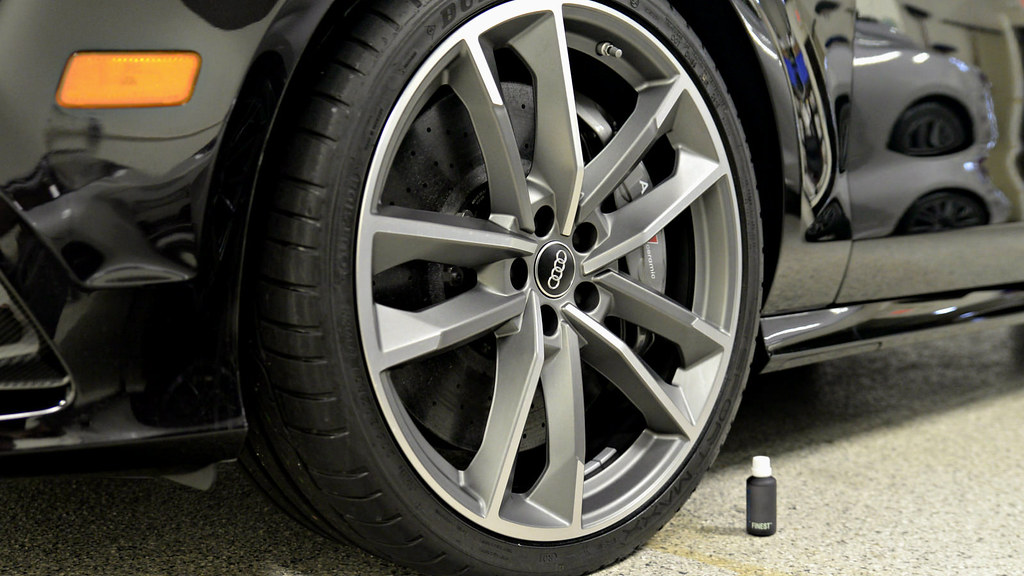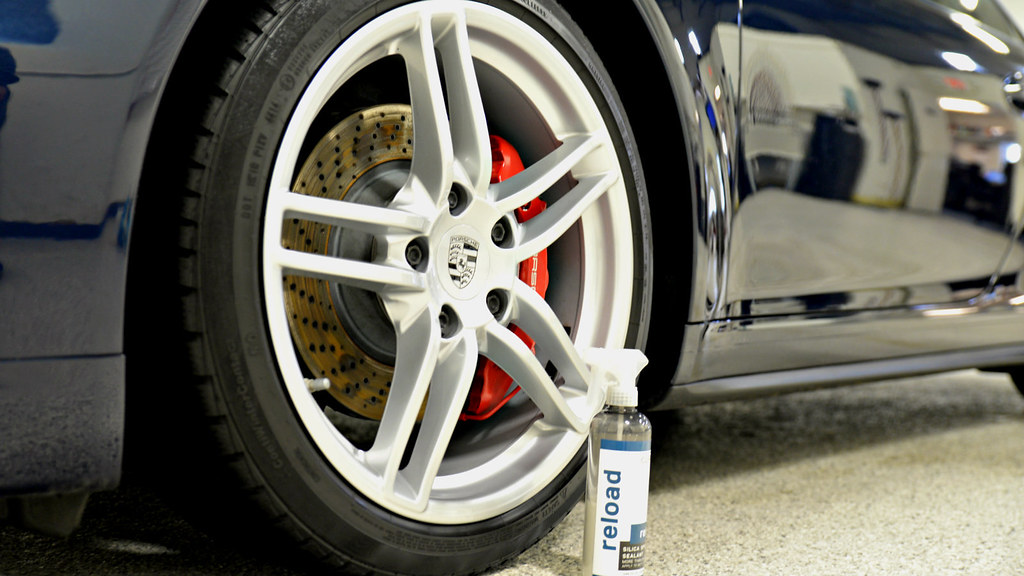Wheel Care Protection: Long & Short Term Strategies with Ceramic Nano Coatings & Silica Sealants
by Greg GellasAs a detailer shop owner in northern New Jersey, I have to contend with a variety of climate and geographic. I come across all manners of client needs and perform a wide variety of services to satisfy vehicle owners over the course of any given year. Besides paint, there seems to be one service that really wins over many clients by making them smile with delight while gaining their trust and loyalty. These are services for wheels that: help to them look their best, offer protection, and make cleaning super simple.
At Signature Detailing New Jersey, we find this an important long-term aspect of protection for client vehicle investments. This is because wheels are a large component of what helps to put together the ‘look’ of a vehicle. More importantly, from a detailing perspective, wheels are constantly bombarded with contaminants that can very quickly, and aggressively, start to wreak long-term damage on wheels if not removed. These contaminants range from: the very fine ferrous iron deposits from brake dust, to any number of road contaminants, to the many environmental and seasonal contaminants. We have two strategies for wheel care and protection depending on client preferences: Ceramic Nano Coatings and Silica-based Sealants.
Ceramic Nano Coatings Provide The Greatest Long Term Protection Solution for Wheels

Far and away, the best current protection offered for the majority of wheels, both OEM (stock) or custom, lies in the application Ceramic Nano Coatings. This is because specific Ceramic Nano Coatings formulations actually cross-link with the clear coat, adding a measurable protection layer to the surface. This means they effectively become the outermost layer of the wheel. And, since Ceramic Nano Coatings are typically harder than clear coat, offer more scratch resistance, and have hydrophobic properties (due to high surface tension) that make wheels very easy to maintain. Not all ceramic coatings bond with the clear coat, so make sure to do your research before becoming set on a specific brand. We utilize CQuartz Finest & Opti-Coat Pro Ceramic Nano Coatings in our shop because both directly bond with clear coated vehicle services. While researching, also note the longevity of each coating, because they can vary brand to brand due to formulations.
In order to properly apply ceramic coatings to wheels the surface must be: thoroughly cleaned and decontaminated, machine polished, and finally be intensively prepped to ensure optimal bonding of the coating to the clear coat. The best method for prepping and coating full wheels is commonly referred to as a ‘wheels off’ approach; meaning the wheels are removed and coated before being reinstalled. Many clients also elect to have the brake calipers coated and sometimes to have the wheel wells darkened (if applicable) for an improved look and easy cleaning. Some clients do not prefer the inner barrels of wheels to be done for one reason or another and therefore elect to only have the wheel faces coated.
Silica Sealants Provide Solid Short Term Protection For Wheel

While Silica Sealants do not offer the same exact type protection as ceramic nanocoatings, due to their temporary nature and lack of hardness, they do offer some great topical contaminant protection and beauty enhancement in the shorter term– say up to 3/4 months. Some also offer very similar hydrophobic properties as their ceramic coating counterparts, which is why wheels treated with silica sealants are very easy to clean. An example of a great silica sealant to add to wheels is CarPro Reload. Longevity of the silica sealants to wheels is dependent on driving frequency and conditions, however, a loose timeline for application would be every 2-4 months, with 4 applications a year being the minimum.
Tech Note: Silica is scientifically identified as Si02 – otherwise known as silicon dioxide or quartz, and is the main component in many ceramic nano coatings.
Maximum Wheel Protection – Combining Ceramic Nano Coatings & Silica Sealant
This philosophy maximizes protection on wheels by adding an additional sacrificial barrier, the sealant, on top the coating, which has similar hydrophobic properties to coatings. Silica Sealants can only be applied on top of ceramic nanocoating after it is fully cured. This is a great system of protection because the sealant provides topical protection from all manners of road and environmental contaminants.
Durability Note: Since wheels are exposed to some of the harshest levels of contamination on the entire vehicle; the durability of coatings and silica sealants can greatly vary based on amount of driving, driving style, geographic area, road conditions, or even seasonal conditions.
In closing, ceramic nanocoatings and silica sealants are protective wheel services that can be offered to clients to help them further protect yet another aspect of their vehicle. The all-around protection of ceramic coating combined with a topical silica sealant (such as CarPro Reload) is by far the best protection barrier that can be applied to the wheel to protect from brake dust, road contaminants, as well as geographic and seasonal contaminants.









Thanks for sharing.
I have tried reload on some oem wheels but I noticed that it becomes more dirty or should I say the brake dust sticks to it more. Dirt can not even be remove just by powee spraying it with water. It really needs to be washed with soap and water. Compared to dirt on the car(reload sealed) itself, when it is dirty I just power spray it with water and the dirt is easily gone. Don’t you have the same experience?
That’s weird. Was the spray allowed to fully cure?
If I apply a ceramic coating to a new wheel before getting the tires mounted, will the balancing weights stick to the wheel?